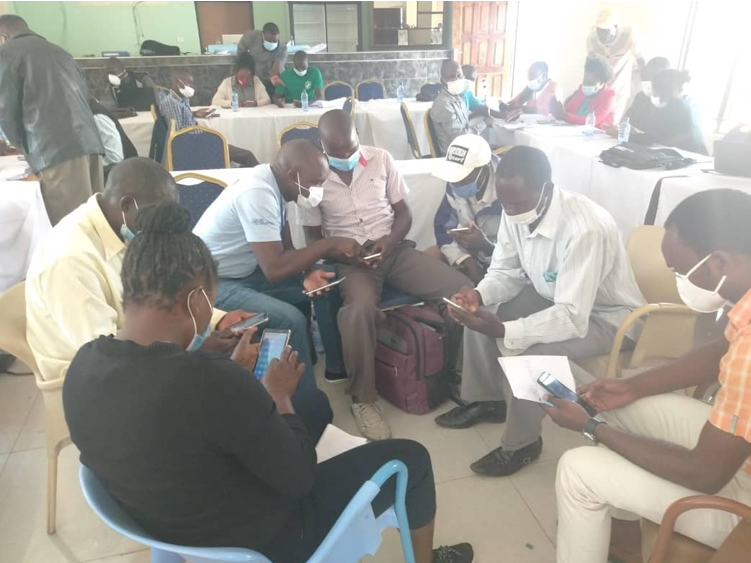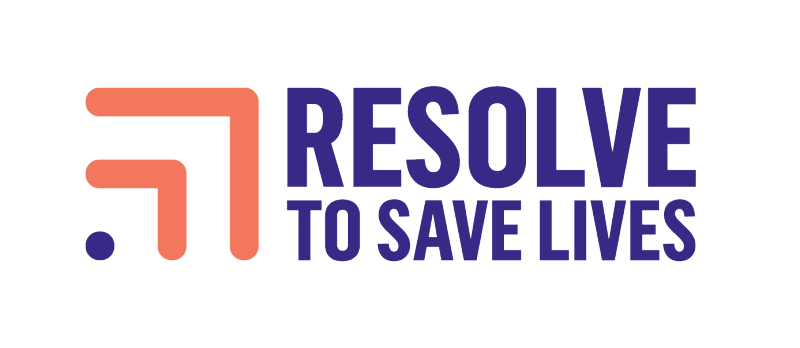
About SDI
The Surveillance and Disease Intelligence (SDI) Cluster is mandated to ensure the early detection and prompt reporting of potential health threats, notifiable diseases, significant public health events, and shifts in epidemiological trends. This mandate is fulfilled through the timely collection, thorough analysis, and effective dissemination of surveillance data that informs evidence-based public health action.
The core objective of the SDI Cluster is to strengthen, harmonize, and equip the national surveillance system to consistently generate high-quality, timely, and actionable data on all nationally notifiable and priority diseases, conditions, and public health events. Through this system, the SDI Cluster supports national and sub-national preparedness and response efforts and enhances overall health security.
To achieve this, the Cluster carries out the following key functions:
- Coordination and Oversight: Leads and coordinates surveillance activities at national, provincial, and district levels, ensuring alignment with national health priorities and international standards.
- Evidence-Based Data Provision: Collects and provides timely, accurate, and evidence-based surveillance data to guide informed decision-making, policy development, and resource allocation.
- System Strengthening: Continuously strengthens and upgrades the national surveillance system, including infrastructure, tools, and human resources, to improve data quality, timeliness, and coverage across all diseases and events of public health importance.
- Event-Based Surveillance: Implements and maintains systems for capturing and reporting public health events occurring outside conventional health facilities, including community-based and informal sources of information.
- Capacity Building and Assessment: Coordinates surveillance-related training and capacity-building initiatives, while routinely assessing surveillance capacities at all levels to identify gaps and opportunities for improvement.
- Surveillance Networks: Develops and sustains district and provincial-level surveillance networks to enhance data sharing, response coordination, and local-level preparedness.
- Cross-Border and Specialized Surveillance: Facilitates cross-border surveillance in collaboration with neighboring countries, and strengthens surveillance for non-communicable diseases (NCDs) and other specialized areas, through integrated surveillance networks.
- One Health Engagement: Promotes a One Health approach by engaging key stakeholders from animal and environmental health sectors in surveillance activities, recognizing the interconnectedness of human, animal, and environmental health.
Through these strategic functions, the SDI Cluster plays a pivotal role in safeguarding Zambia’s health security and ensuring a well-coordinated, responsive, and resilient national surveillance system.
SDI Activities
Cluster Activities
Disease outbreaks pose a significant threat to human life, disrupt economies, and place immense strain on healthcare systems and society as a whole. Emerging and re-emerging public health events continue to challenge national health security, often appearing with little warning and spreading rapidly if not detected and addressed promptly.
To effectively mitigate these threats, it is imperative to strengthen public health surveillance systems that provide early warning signals and enable rapid response mechanisms. In Zambia, this is achieved through the implementation of the Integrated Disease Surveillance and Response (IDSR) strategy—a comprehensive, facility-based approach that consolidates all public health surveillance activities under a unified framework.
The IDSR strategy is designed to improve the detection, reporting, confirmation, and timely response to priority diseases, conditions, and public health events. It fosters coordination across all levels of the health system and ensures that surveillance efforts are streamlined, efficient, and aligned with national and international health regulations.
Central to the IDSR is the incorporation of two complementary surveillance methodologies:
- Indicator-Based Surveillance (IBS): This approach focuses on the systematic collection and analysis of structured data on predefined priority diseases and conditions from health facilities. It is based on routine reporting and is essential for monitoring disease trends over time.
- Event-Based Surveillance (EBS): EBS enhances early warning capabilities by capturing unstructured or ad hoc information about potential public health threats, including rumors, reports from communities, media sources, and other informal channels. It enables the health system to detect unusual events or outbreaks that may not yet be captured through routine surveillance.
Together, IBS and EBS form a robust surveillance framework that enhances the capacity of the health system to respond swiftly to public health threats, thereby reducing morbidity, mortality, and the socio-economic impact of disease outbreaks.
Strengthening IDSR and its components remains a key priority in building a resilient health system capable of safeguarding national and regional health security.
- Event Based Surveillance (EBS)
- Indicator Based Surveillance (IBS)
The Zambia National Public Health Institute (ZNPHI) Mortality Surveillance Program coordinates the development and operationalization of a national system that provides reliable, timely, and comprehensive information on all-cause mortality. The program generates critical data that informs evidence-based health policy development, implementation, and evaluation in Zambia.
By delivering accurate and disaggregated mortality data—by cause, location, age, sex, and other factors—the program:
- Identifies key health challenges and population trends
- Monitors the impact of public health programs and interventions
- Guides resource allocation and priority setting
- Strengthens emergency preparedness and response
- Supports national and international health reporting requirements
The Mortality Surveillance Program strengthens Zambia’s public health intelligence, enabling data-driven decision-making that improves health outcomes and supports the country’s broader development goals.
Environmental surveillance—specifically through the monitoring of wastewater to detect pathogens—serves as a vital supplementary tool in assessing the health status of populations. This approach is particularly valuable in areas where traditional surveillance systems are limited or where there is a suspicion of persistent viral circulation.
By analyzing wastewater samples, environmental surveillance provides early warning signals for emerging or re-emerging pathogens and biomarkers within communities. This enables public health authorities to initiate timely interventions and prevent the spread of disease before widespread outbreaks occur.
The data obtained from wastewater testing offer critical insights into the overall health trends of communities and complement existing public health surveillance systems. These insights strengthen disease prevention and control strategies by informing evidence-based decision-making and resource allocation.
In Zambia, environmental surveillance was introduced in 2018 and has since played a pivotal role in the early detection of poliovirus, significantly contributing to outbreak response efforts and ongoing disease eradication initiatives.
The Zambia National Public Health Institute (ZNPHI), through the Surveillance and Disease Intelligence (SDI) Cluster, is actively implementing cross-border surveillance to strengthen public health security both within Zambia and across the region. In its effort to enhance border surveillance, SDI is establishing structured surveillance mechanisms and collaborative actions that enable timely information sharing and coordinated responses to public health hazards with potential for cross-border transmission.
These mechanisms aim to facilitate the prevention, early detection, and rapid response to infectious disease threats, while simultaneously building national and regional capacities to manage and mitigate risks associated with all-hazards—including biological, chemical, radiological, and environmental threats.
In addition to strengthening surveillance systems, SDI collects and analyzes data on population mobility to better understand the movement and connectivity patterns of communities. This analysis helps identify high-traffic corridors and areas of concern where disease transmission risk is elevated due to population movement.
Insights from mobility mapping support the strategic planning of public health interventions by:
- Informing the identification of additional high-risk locations for disease screening and surveillance
- Guiding the deployment of limited public health resources to areas where they will have the greatest impact
- Enhancing the effectiveness of cross-border collaboration in disease prevention and control
By integrating mobility data with cross-border surveillance, ZNPHI ensures a proactive, data-driven approach to managing health threats that transcend national boundaries—ultimately contributing to a safer, more resilient public health system for Zambia and the region.

The Zambia National Public Health Institute (ZNPHI), through its Surveillance and Disease Intelligence (SDI) Unit, collaborates closely with the Ministry of Health to provide and strengthen port health services across the country. These services are delivered as part of Zambia’s commitment to the International Health Regulations (IHR 2005), ensuring the safe and secure movement of people, goods, and trade while protecting against the international spread of diseases.
The SDI Unit supports the implementation of public health surveillance at Points of Entry (PoEs)—such as airports, seaports, and ground crossings—to monitor and manage diseases and events that pose a Public Health Emergency of International Concern (PHEIC).
Key Port Health Activities Include:
- Screening of travelers for communicable diseases
- Implementation of examination and quarantine measures when necessary
- Coordination of transportation and referral of ill passengers
- Issuance of health certifications for travelers
- Dissemination of travel advisories and public health information
In addition to operational surveillance, the SDI Unit plays a critical role in preparedness and readiness by:
- Developing and updating all-hazards preparedness plans for Points of Entry
- Designing disease-specific emergency response plans tailored to likely threats
These integrated measures enhance Zambia’s national capacity to prevent, detect, and respond to health threats at international borders, contributing to global health security and safeguarding both citizens and travelers.


Zambia has established a robust and responsive framework for vaccine-preventable disease (VPD) surveillance to monitor and reduce the burden of infectious diseases such as polio, measles, yellow fever, tetanus, and rotavirus. These diseases are prioritized for intensive surveillance in alignment with global and regional goals for their eradication and elimination.
The country’s VPD surveillance system ensures the timely detection, investigation, and response to outbreaks, thereby safeguarding public health through early interventions and effective vaccination programs. Surveillance activities are closely integrated with national immunization strategies, allowing health authorities to track disease trends, identify immunity gaps, and adjust campaign strategies accordingly.
Zambia’s VPD surveillance contributes to:
- Strengthening early warning systems for outbreak detection
- Guiding resource allocation for immunization efforts
- Evaluating the effectiveness of vaccination programs
- Supporting regional and global reporting obligations
- Promoting rapid response to suspected or confirmed cases
By maintaining vigilant and coordinated surveillance, Zambia enhances its public health resilience and reinforces its commitment to disease control, ultimately working towards a healthier, safer population.


















